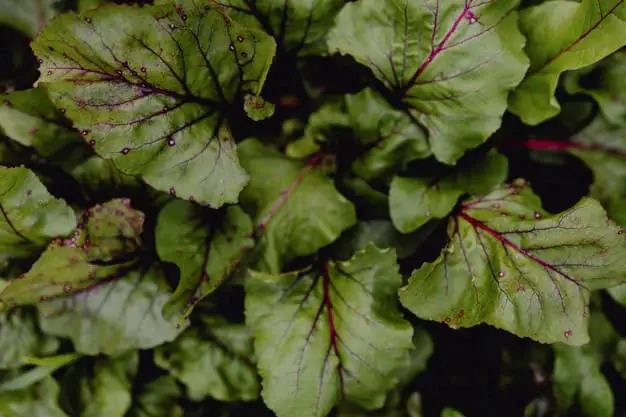Contents

Have you ever had a craving for Rhubarb pie? Only to go to your garden and see your rhubarb plants have started flowering? Yeah, it is a very sad occurrence because it signifies the end of the relevant lifecycle of your plant.
A rhubarb is a vegetable and as with most of them, flowering and producing seeds means they have grown to full maturity. A fully mature vegetable often tastes bitter, less flavored, and some even become poisonous. So, if you’re epically curious about why your rhubarbs are flowering and how to manage the situation, please keep reading.
Good to Read : Growing To Harveting – Learn Everything about Rhubarb
Why Rhubarbs Begin to Flower

Rhubarbs flowering or bolting as some call it is inevitable. It is a part of plant life and all plants must mature at some point. However, there are some underlying reasons why your plant might begin to bolt before you expect it and they could be:
Due to their plant variety: Some varieties of rhubarbs such as the heirloom rhubarb varieties are prone to flowering very early. Examples of these heirloom rhubarbs are the Victorian rhubarbs, Holstein bloodred rhubarbs, red crimson rhubarbs, and McDonald’s rhubarbs to name a few. Other variants such as the modern cultivars do not flower as early. Also, each variety has a different maturity period. Some could mature in less than eight years while others mature within an eight to fifteen years’ time period. So, you should know that the shorter this period is, the faster it begins to bloom.
Due to heat stress: Whenever the environmental temperature rises far above what the rhubarb can withstand it affects its growth. Rhubarbs are best grown in cool weather and studies have shown that too much heat can result in the flowering of rhubarbs. An ideal temperature of seventy-five degrees Fahrenheit is all your rhubarb needs.
Due to pest invasions: Rhubarbs are known to be very hardy plants. It is not common for them to be infested by insects. The major culprits are mostly slugs and snails. However, some insects like the Rhubarb Curculio Beetle can create holes that affect the stalk of the plant, and sometimes this can be cut off. But when this is beyond what the plant can stand, they begin to flower as a means of survival.
Due to fungal diseases: Fungal diseases are also another reason why they begin to flower early because as earlier said the plant does want to survive. The most common fungal diseases on rhubarbs are usually caused by the Ascochyta rhei and Ramularia rhei fungi. They cause leaf spots which in worst-case scenarios could cause the plant to die a slow painful death. Another notable fungus is the Botrytis which causes crown, leaf, and stalk rot.
What to do when Plants Bolt
So, what should you do when your rhubarbs begin to flower? A lot of people keep asking this question. Some gardeners choose to remove seed pods from the stalks of the rhubarb plants so they don’t yield flowers. If it was discovered too late, they’ll remove the flowers so the plant can focus its energy on leaf growth. You could cut the flowers and seed pods off with a very sharp knife.
However, this is not highly favorable and it’s best not to try preventing the flowers from blooming. Some people still cook the rhubarb stalks but as I mentioned earlier in this article, it is safer to avoid it because high levels of oxalic acid present in the leaves and stalks could become very poisonous. This tells us that there’s not much we could do. In this case, the adage “Prevention is better than a cure” are the words to live by.
Since you can’t prevent your rhubarb plant from bolting, you can try to slow down its occurrence by caring for it adequately.
How to Care for Rhubarbs
Your newly planted rhubarb plants must be taken care of to prevent bolting from occurring sooner than expected. Here’s what you must do.
Consider mulching: Mulching involves you spreading a layer of dried leaves over the topsoil where the rhubarb is planted. This will keep it cool and reduce the growth of weeds in the area.
Water regularly: Watering the plant regularly would reduce the likelihood of drought stress affecting your rhubarbs. Also, be careful not to water it too frequently because the usual fungal diseases affecting rhubarb growth are caused by waterlogging the plants.
Get rid of insects and pests: Should you find any snails or slugs feeding on your plant remove them immediately to prevent stressing your plant.
In conclusion, rhubarbs are perennial plants that usually live to about eight of fifteen years after being planted. Their survival instincts could cause them to bolt early. So they must be well taken care of to get the most out of them before they mature fully.
Good to Read : Organic Pesticides – Rhubarb Leaf Pesticide
Want to know more about gardening ?
Fill in your email address in the form below and you'll receive all the latest updates directly in your in-box.
Thank you for subscribing.
Something went wrong.